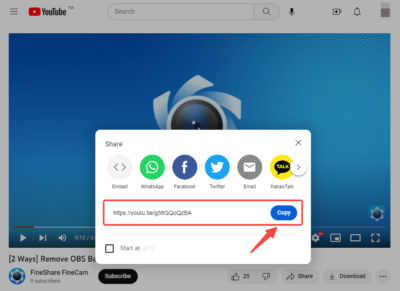I. Introduction
Visual content plays a crucial role in creating an engaging and visually appealing website. Incorporating high-quality images can enhance the user experience and effectively convey your message. Shutterstock, a popular stock image platform, offers a vast collection of copyrighted images for use in various projects.
However, it's important to understand and abide by copyright laws and guidelines when utilizing such content. In this blog post, we will explore the guidelines for using Shutterstock images on your website. By following these guidelines, you can ensure that you incorporate copyrighted content legally, protect yourself from copyright infringement, and create a visually stunning website that respects the rights of content creators.
Also Read This: Is Getty Images a Trustworthy Source for Stock Photography?
II. Understanding Copyright and Licensing

Copyright is a legal protection granted to the creators of original works, such as images, photographs, illustrations, and graphics. It gives them exclusive rights to reproduce, distribute, and display their work. As a website owner or content creator, it is essential to respect these rights and understand the licensing terms associated with using copyrighted content.
Licensing refers to the permissions granted by the copyright owner to use their work in specific ways. When using Shutterstock images, you must acquire the appropriate license to legally incorporate them into your website. Shutterstock offers various licensing options, including royalty-free and rights-managed licenses, each with its own terms and restrictions.
By understanding copyright and licensing, you can navigate the legal landscape of using copyrighted content and ensure that you comply with the necessary requirements when incorporating Shutterstock images on your website.
Also Read This: Laugh Out Loud With Downloading Likee Funny Videos for Free
III. Using Shutterstock Images Legally
To incorporate Shutterstock images into your website while respecting copyright laws, follow these guidelines:
Step 1: Choosing the appropriate license
Carefully review the licensing options provided by Shutterstock. Determine the type of license that best suits your needs, considering factors such as image usage, duration, and exclusivity.
Step 2: Searching and selecting images on Shutterstock
Utilize the search filters on Shutterstock to find images that align with your website's theme and content. Consider factors like image resolution, subject matter, and composition to ensure they meet your requirements.
Step 3: Downloading the images legally
Once you've selected the desired images, use the proper download options provided by Shutterstock. Avoid unauthorized methods of downloading or sharing images, as this can lead to copyright infringement.
Step 4: Properly attributing the images
If the chosen Shutterstock image requires attribution, ensure that you provide the necessary credit according to the license terms. Include the photographer's name, Shutterstock as the source, and a link to the image's Shutterstock page, if applicable.
Step 5: Using images within the license limitations
Respect the restrictions outlined in the license agreement. This may include limitations on image size, number of reproductions, or usage on specific platforms. Adhere to these limitations to avoid copyright violations.
By following these steps, you can incorporate Shutterstock images legally into your website, respecting the rights of content creators while enhancing the visual appeal of your online presence. Remember to review and understand the specific terms and conditions of each image's license to ensure compliance.
The following video is about Shutterstock:
Also Read This: Here’s the Complete Guide for High-Quality Downloads from Bandcamp
IV. Best Practices for Incorporating Copyrighted Content
When incorporating copyrighted content, including Shutterstock images, into your website, it is important to follow these best practices:
1. Resizing and optimizing images for web use:
Adjust the image dimensions and file size to optimize loading speed without compromising quality. Use appropriate image compression techniques to maintain a balance between visual appeal and website performance.
2. Proper placement and integration of images within the website:
Strategically place images within your website's layout to complement the text and enhance the overall user experience. Ensure that images are relevant to the content they accompany and align with the website's visual style.
3. Maintaining image quality and resolution:
Display images in their original quality and resolution to preserve their visual impact. Avoid distorting or altering the images in a way that may compromise their integrity or violate copyright restrictions.
4. Ensuring images are relevant and enhance website content:
Use images that are directly related to the subject matter or purpose of your website. Avoid using generic or irrelevant images that may confuse or mislead visitors. Images should complement and enhance the website's message or storytelling.
5. Updating and refreshing images periodically:
Regularly review and update the images on your website to keep content fresh and engaging. Replace outdated or overused images with new ones to maintain relevance and avoid potential copyright issues.
By following these best practices, you can effectively incorporate copyrighted content, such as Shutterstock images, into your website while maintaining a visually appealing and legally compliant online presence. Remember to always respect the rights of content creators and adhere to copyright laws.
Also Read This: Does Alamy Have a Free Trial? Exploring Options for Exploring the Platform
V. Avoiding Copyright Infringement
To avoid copyright infringement when using Shutterstock images or any copyrighted content on your website, consider the following guidelines:
1. Recognizing copyrighted content:
Familiarize yourself with the concept of copyright and learn to identify copyrighted materials, including images, graphics, text, and multimedia. Avoid using any content without proper authorization or licensing.
2. Identifying fair use and creative commons licenses:
Understand the principles of fair use, which allow limited use of copyrighted material for specific purposes, such as criticism, commentary, or educational use. Additionally, explore content under Creative Commons licenses that may offer more lenient usage terms.
3. Obtaining permission for specific use cases:
If you intend to use copyrighted content beyond what is allowed by fair use or creative commons licenses, seek explicit permission from the copyright holder. Contact them directly to request authorization or explore licensing options.
4. Taking down infringing content if necessary:
Regularly monitor your website to ensure that no copyrighted content is being used without permission. If you receive a valid copyright infringement claim, promptly remove the infringing content and address the issue to avoid legal consequences.
Remember, copyright infringement can result in legal penalties and damage to your online reputation. Always prioritize ethical and legal use of copyrighted material, including Shutterstock images, to protect yourself and respect the rights of content creators.
This week I'll be tweeting some highlights of The Duke and Duchess of Edinburgh's visit to Brunei, in October 2017🇧🇳
Starting with this beautiful photo of TRH arriving from a boat tour around the Water Village and mangroves.
📸Tim Rooke/Shutterstock pic.twitter.com/3hW7pZhpxQ
— Mariana (@Mari_Edinburghs) July 11, 2023
Also Read This: School Soundwaves: Unblocking SoundCloud at School – Enjoy Your Beats Anywhere
VI. Additional Resources and Tools
When incorporating copyrighted content, such as Shutterstock images, on your website, consider utilizing the following resources and tools:
A. Shutterstock's copyright guidelines:
Familiarize yourself with Shutterstock's official copyright guidelines. These resources provide valuable information on proper image usage, licensing terms, attribution requirements, and other copyright-related considerations specific to Shutterstock's platform.
B. Online tools for checking image copyright:
Use online tools like TinEye, Google Images, or Shutterstock's reverse image search to check the origin and copyright status of an image. These tools can help identify potential copyright infringement or locate the original source of an image.
C. Alternative sources for free and royalty-free images:
Explore other stock image platforms and websites that offer free or royalty-free images for commercial use, such as Unsplash, Pixabay, or Pexels. Be sure to review their licensing terms and attribution requirements before incorporating any images into your website.
D. Importance of regularly reviewing and updating copyright knowledge:
Stay informed about copyright laws, licensing practices, and emerging trends through reputable sources. Keep yourself updated on any changes in regulations or guidelines to ensure your website's compliance with copyright requirements.
By leveraging these additional resources and tools, you can enhance your understanding of copyright issues, verify the legitimacy of images, and access alternative sources for quality visuals while maintaining legal and ethical use of copyrighted content on your website.
Also Read This: Update Undo: Reverting the Spotify Update – Regain Your Preferred Interface
VII. FAQs about using Shutterstock images:
1. Can I use images from Shutterstock on my website?
Yes, you can use Shutterstock images on websites without any restrictions on the number of viewers or hits on the website. However, you must purchase a license from Shutterstock in order to do so.
2. Are all images on Shutterstock copyright free?
No, not all images on Shutterstock are copyright free. However, all content available at Shutterstock is royalty-free, which means that you can use it as many times as you want without having to pay additional fees.
3. What are the terms of using Shutterstock images on my website?
When you purchase a license from Shutterstock, you are granted the right to use the image for commercial purposes. This means that you can use the image on your website, in your marketing materials, and in your products. However, you must always give credit to the photographer or artist who created the image.
4. How do I give credit to the photographer or artist who created the image?
You can give credit to the photographer or artist by including their name and the Shutterstock website in the image caption. For example, you could write "Image by John Smith, Shutterstock."
5. What are the consequences of using Shutterstock images without a license?
If you use Shutterstock images without a license, you could be sued for copyright infringement. This could result in you having to pay damages to the photographer or artist who created the image.
6. What are some tips for using Shutterstock images on my website?
Here are some tips for using Shutterstock images on your website:
- Choose images that are relevant to your website's content.
- Use high-quality images that will look good on your website.
- Give credit to the photographer or artist who created the image.
- Use the right license for your needs.
VIII. Conclusion
Incorporating copyrighted content, such as Shutterstock images, on your website requires a thorough understanding of copyright laws and adherence to licensing guidelines. By following the proper procedures, you can utilize these images legally and ethically while enhancing the visual appeal of your website. Remember to choose the appropriate licenses, attribute images when necessary, and respect the restrictions outlined by copyright holders.
Stay updated on copyright regulations and regularly review your website for potential infringements. By respecting the rights of content creators and using copyrighted content responsibly, you can create a compelling website that respects intellectual property while engaging your audience.














